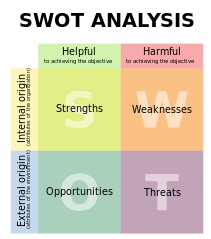September 10, 2013
 As an agency who is always looking to team up with marketing-centric, growth-oriented companies, I’m constantly baffled by the number of prospective clients who tell me that their competitive edge is that “we’re honest,” or “we care about our customers,” or “hey, we’re very good at what we do.” The next obvious question then is how many of their competitors say they are not very honest, they don’t really care about their customers, and they’re not very good at what they do?
As an agency who is always looking to team up with marketing-centric, growth-oriented companies, I’m constantly baffled by the number of prospective clients who tell me that their competitive edge is that “we’re honest,” or “we care about our customers,” or “hey, we’re very good at what we do.” The next obvious question then is how many of their competitors say they are not very honest, they don’t really care about their customers, and they’re not very good at what they do?
We’ve all gotten so wrapped up in what we perceive to be our strengths, what we “know” the market wants, what the reasons are that customers purchase our products and services (or at least should do) that we are in danger of not seeing the forest through the trees. We spend our time thinking up strategies, putting time against newer ways of reaching customers and prospects with the ever-increasing tactics of social media, etc. But we seldom, if ever, take the time to stand back and reflect where the company stands in the real-world, as the marketplace sees us.
As marketers, we know the importance of doing a SWOT analysis – Strengths, Weaknesses, Opportunities, and Threats – usually before companies rebrand themselves or new products are launched. SWOT needs to be a central part of our marketing efforts before the strategy development, before the tactical implementation, before undertaking new methods of communicating and measuring the effectiveness of our communications. In fact, when was the last time your organization or your marketing partner put together a brutally honest, no-holds-barred SWOT analysis? If you’re like most, it’s been a while.
In larger companies, marketing departments have annual planning cycles. In smaller companies, the routines are not as formalized, and planning has a tendency to be less frequent and with less time devoted to it. Generally this process looks more at budget allocation, new initiatives to be considered or implemented, staff/services cut-backs, etc. But hardly ever (ok, with less frequency than one would think) does this planning examine not just the strategy and tactics employed but how marketplace changes may have changed the company’s strengths, opportunities, weaknesses, and threats at the most basic level.
This needs to be done on a regular basis before time and resources (financial, staff, etc.) are committed to a strategy, an approach, or new tactics. Important questions need to be asked, and too often the most basic questions are not asked.
We all know them: What are our strengths? Are the strengths recognized by customers and prospects? Do our competitors have the same strengths? What are their strengths? And so on. How has the marketplace changed? Where are the new opportunities? Are our products/services adversely affected by emerging trends? How are our competitors reacting to the changing marketplace? Etc.
So I am NOT suggesting that the Marketing Department doesn’t know how to approach the marketplace or that we don’t know what we need to know. I am, rather, suggesting two things:
1. We need to set aside some time, on a regular basis, to carefully put all these questions and the answers together, and only then plan, create the strategy and implementation tactics.
2. We need to test our assumptions – every time – against what is happening in the real-world, on the ground, where the customers live and where our revenues come from.
With everything on Marketing’s plate today, and the urgency in which it needs to get done, there’s a real danger of losing sight of the basics. Who has the time, right? Well, if we lose sight of the need to regularly and carefully look at what we think our company is (warts and all), look at all that we do, and all the resources we use/spend, in the ever evolving marketplace – not just our guesses about it and our customers – we risk losing all that we work so hard to achieve: increasing revenues and market share.
The time tested marketing adage of “If you don’t really know where you are, it is much more difficult to get where you want to be” has never been more true.
Posted in Advertising, Blog, Branding, Direct Response, Marketing, New Business, Research, Sales & Marketing, Social Media, Strategic Planning, Strategy | No Comments
Tags: Advertising, branding, Marketing, Marketing Plan, Messages, Research, Sales & Marketing, Strategy, SWOT, Tactics, Value proposition